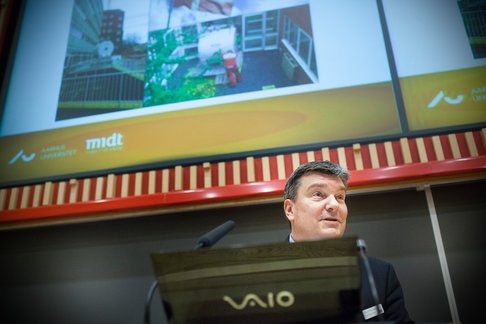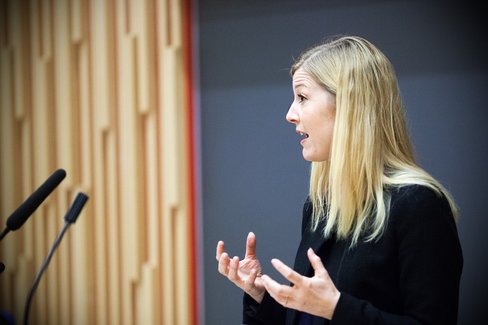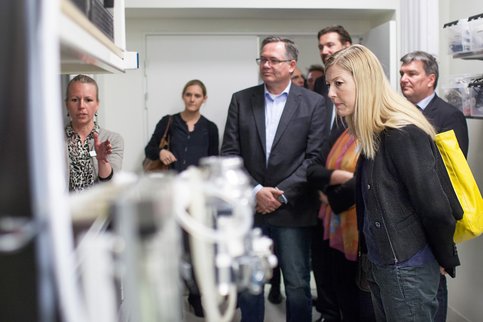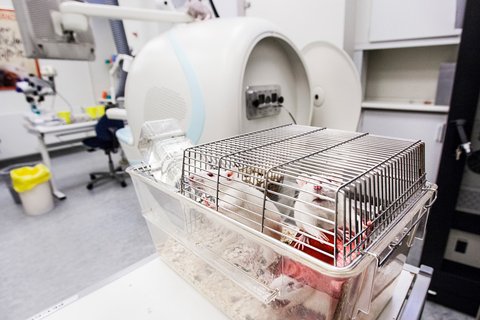- Education
-
Research
Current research
Talent
-
Collaboration
Businesses
Government agencies and institutions
Alumni
-
About AU
Organisation
Job at AU
Sofie Carsten Nielsen, Danish Minister for Higher Education and Science, visited Aarhus last Monday to inaugurate three new super scanners at Aarhus University and Aarhus University Hospital.
2014.05.08 |

Sofie Carsten Nielsen shook hands with some of the members of the audience at the inaugural ceremony when she arrived at the university hospital. Many of the researchers involved from AU and AUH attended the event. During the subsequent guided tour, some of them gave the Minister an insight into the possibilities offered by the new research and teaching facilities. Photo: Lars Kruse/AU Kommunikation.
Researchers from Aarhus University (AU) and Aarhus University Hospital (AUH) can now start using the three new super scanners. The inauguration of the new research and teaching facilities took place last Monday, and the participants included Sofie Carsten Nielsen, Danish Minister for Higher Education and Science, who had come to see the new equipment.

Claus Thomsen, Chief Medical Officer and MD, PhD from AUH (photo), hosted the inaugural ceremony together with Dean Allan Flyvbjerg. Claus Thomsen thanked the Minister for participating in the event and explained that the establishment of the new research facilities is the result of the close partnership between the university and the region as well as with major private foundations.

Sofie Carsten Nielsen (photo) also praised the strong and efficient collaboration within the area of health in Aarhus.
“Health research is an important area, and to be able to conduct excellent research and attract the most talented researchers – also from abroad – we must have good infrastructure and state-of-the-art research facilities”, said the Minister.

Professor Jørgen Frøkiær, Consultant and MD, PhD (photo), and Clinical Professor Leif Østergaard, Consultant and MD, PhD, both from the Department of Clinical Medicine at AU, explained how their teams at the Department of Nuclear Medicine/PET Center and the Center of Functionally Integrative Neuroscience (CFIN) will use the scanning facilities in their research. They expect, among other things, that the synergies from using the new scanning equipment will provide more detailed information, higher-resolution images and therefore much more accurate research results.

After the inaugural ceremony at the Palle Juul Jensen Auditorium at AUH, the Minister participated in a guided tour of the new research and teaching facilities. Nina Kerting Iversen, Assistant Professor from the Department of Clinical Medicine and CFIN (left in the photo), explained how she can use the new scanning equipment to study thrombosis in the brain.

The Minister was, e.g., introduced to this new PET-MRI scanner on the guided tour. It will initially be used to study cells and animal models. The ambition is to quickly transfer the results to the development of patient examinations. Here the mice are waiting to be scanned.
All photos were taken by photographer Lars Kruse/AU Communication.